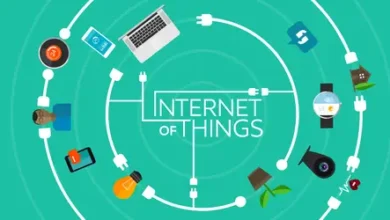The Definitive List Of Cyber Security Threats To Be Aware Of

In 2024, cybersecurity threats continue to evolve, posing serious risks to individuals and organizations worldwide. Meanwhile, with the increasing sophistication of attacks, it’s crucial to stay informed about the most significant threats and take proactive measures to safeguard sensitive data. Check out the article to know more about cybersecurity. So, here’s a list of the most prevalent cyber security threats you need to be aware of.
List Of Cyber Security Threats
| Cyber Security Threats | Description | Potential Impact | Prevention Tips |
|---|---|---|---|
| Phishing | A social engineering attack where attackers impersonate trusted entities to steal personal information via fraudulent emails or messages. | Compromised personal and financial information, unauthorized access to accounts. | Verify email sources, avoid clicking suspicious links, and use email filtering tools. |
| Ransomware | Malware that encrypts files and demands a ransom for their release, causing disruption to operations and potential data loss. | Firstly Data loss, operational downtime, and even financial loss due to ransom payments. | Regularly back up data, use anti-malware software, and educate employees about suspicious downloads. |
| Zero-Day Exploits | Attacks that exploit unknown vulnerabilities in software before developers can issue a patch. | Unauthorized system access, sensitive data theft, and system compromise. | Ensure timely software updates and use intrusion detection systems. |
| Denial-of-Service (DoS) Attacks | Attacks that overwhelm a network or server with traffic, making it unavailable to users. | Website or service downtime, financial loss, and reputation damage. | Use load balancers, implement firewalls, and monitor network traffic for unusual activity. |
| Insider Threats | Security breaches caused by individuals within an organization, either maliciously or accidentally. | Data leaks, intellectual property theft, and reputational harm. | Implement access controls, monitor user behavior, and enforce strict data access policies. |
| Advanced Persistent Threats (APTs) | Long-term, targeted cyber-attacks where intruders remain undetected in a system to steal information over time. | Firstly, loss of sensitive data, intellectual property theft, and occasionally may lead to long-term system compromise. | Employ network segmentation, monitor for abnormal activities, and use security analytics tools. |
| Man-in-the-Middle (MitM) Attacks | Attackers intercept communications between two parties to steal or alter data in transit. | Compromised communications, identity theft, and data manipulation. | Use encrypted communication channels and implement secure authentication protocols. |
| SQL Injection | A vulnerability where attackers inject malicious SQL queries into databases to manipulate data or gain unauthorized access. | Data breaches, manipulation of sensitive data, and unauthorized access to databases. | Regularly update and secure web applications, and validate user inputs. |
| Botnets | A network of infected devices controlled by attackers to perform malicious activities like DDoS attacks. | Unauthorized system use, service disruption, and data theft. | Use firewalls, detect unusual network activity, and update software regularly. |
| IoT Device Vulnerabilities | Security weaknesses in connected devices like smart home gadgets, which can be exploited to gain access to a network. | Unauthorized control of devices, data breaches, and network compromise. | Change default device credentials, update firmware, and segment IoT networks. |
1. Phishing
Phishing is a common social engineering attack where cybercriminals impersonate trusted entities to steal sensitive information. Generally, these attacks often come through fraudulent emails, texts, or websites designed to trick victims into disclosing passwords, credit card numbers, or other personal data. Therefore, always be cautious when receiving unsolicited messages, verify the source, and avoid clicking on suspicious links.
2. Ransomware
Ransomware attacks have been increasing in both frequency and sophistication. This type of malware encrypts your files, demanding a ransom for their release. Nonetheless, victims are often left with the difficult choice of paying the ransom or losing valuable data. Thus, the best defense against ransomware is to maintain regular backups of your important data and use up-to-date security software.
3. Zero-Day Exploits
Zero-day exploits target software vulnerabilities that developers haven’t yet patched. These attacks can cause significant damage before the vulnerability is discovered and fixed. Therefore, to protect against zero-day exploits, ensure you have a robust intrusion detection system in place and keep your software up-to-date.
4. Denial-of-Service (DoS) Attacks
DoS attacks flood a server or network with traffic to overload it, thereafter making services unavailable to legitimate users. These attacks can result in severe downtime and financial loss, especially for businesses reliant on online services. So, implement load balancing and firewall protections to mitigate these attacks.
5. Insider Threats
Insider threats occur when individuals within an organization compromise security, either maliciously or through negligence. Employees with access to sensitive information can misuse their privileges or accidentally cause a data breach. Thus, regular audits, access controls, and employee training can help prevent insider threats.
6. Advanced Persistent Threats (APTs)
Advanced Persistent Threats are stealthy, continuous cyber-attacks targeting specific organizations over extended periods. These attackers often remain undetected for long periods, stealing data or monitoring activity. Thereafter, employing advanced security tools and network segmentation is critical to detect and mitigate APTs.
7. Man-in-the-Middle (MitM) Attacks
In MitM attacks, cybercriminals intercept communications between two parties to steal or modify data. These attacks often occur over unsecured networks, thereafter making encryption and secure connections essential. Therefore, always ensure you’re using encrypted communication channels to prevent such intrusions.
8. SQL Injection
SQL injection attacks target databases by injecting malicious SQL code to manipulate data or gain unauthorized access. Since, they often exploit vulnerable web applications. Regular security audits and input validation can prevent these attacks from compromising your data.
9. Botnets
Botnets consist of a network of compromised devices controlled remotely by attackers. These devices can be used to launch large-scale attacks like Distributed Denial-of-Service (DDoS) or perform unauthorized data collection. Therefore, regularly update your systems and monitor network traffic to detect and mitigate botnet activity.
10. IoT Device Vulnerabilities
As more devices become connected, the Internet of Things (IoT) presents new security challenges. Poorly secured IoT devices can be exploited to gain access to your network or control devices remotely. So, always change default device settings, update firmware, and isolate IoT devices on separate networks for better security.
Summing Up
Cyber security threats are constantly evolving, making it essential for individuals and organizations to stay informed and vigilant. From phishing scams to advanced persistent threats, understanding the risks and taking proactive measures can surely reduce the likelihood of falling victim to these attacks. Therefore, implementing strong security protocols, staying up-to-date with the latest software patches, and educating employees on security best practices are crucial steps in safeguarding sensitive data and maintaining a secure digital environment.
To conclude, by being aware of these cyber security threats and following preventive measures, you can significantly minimize the potential damage and ensure a more resilient defense against the growing landscape of cyber risks in 2024 and beyond.





